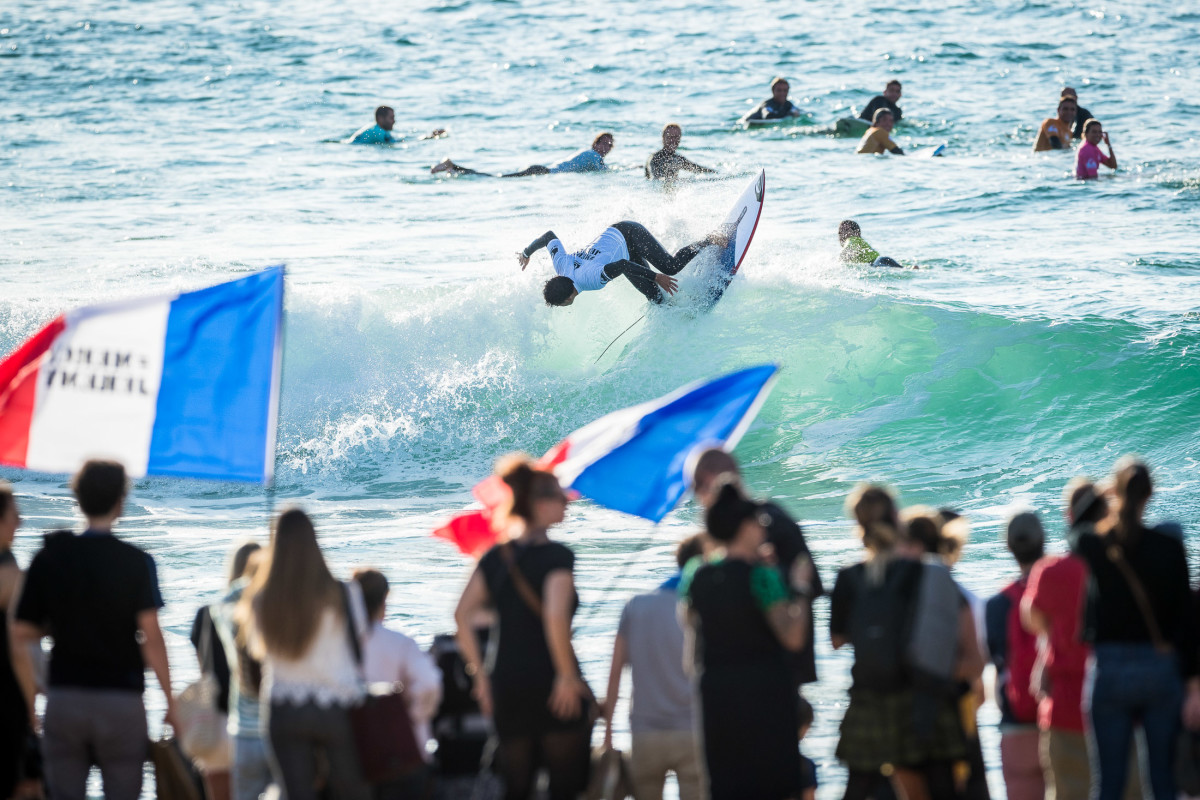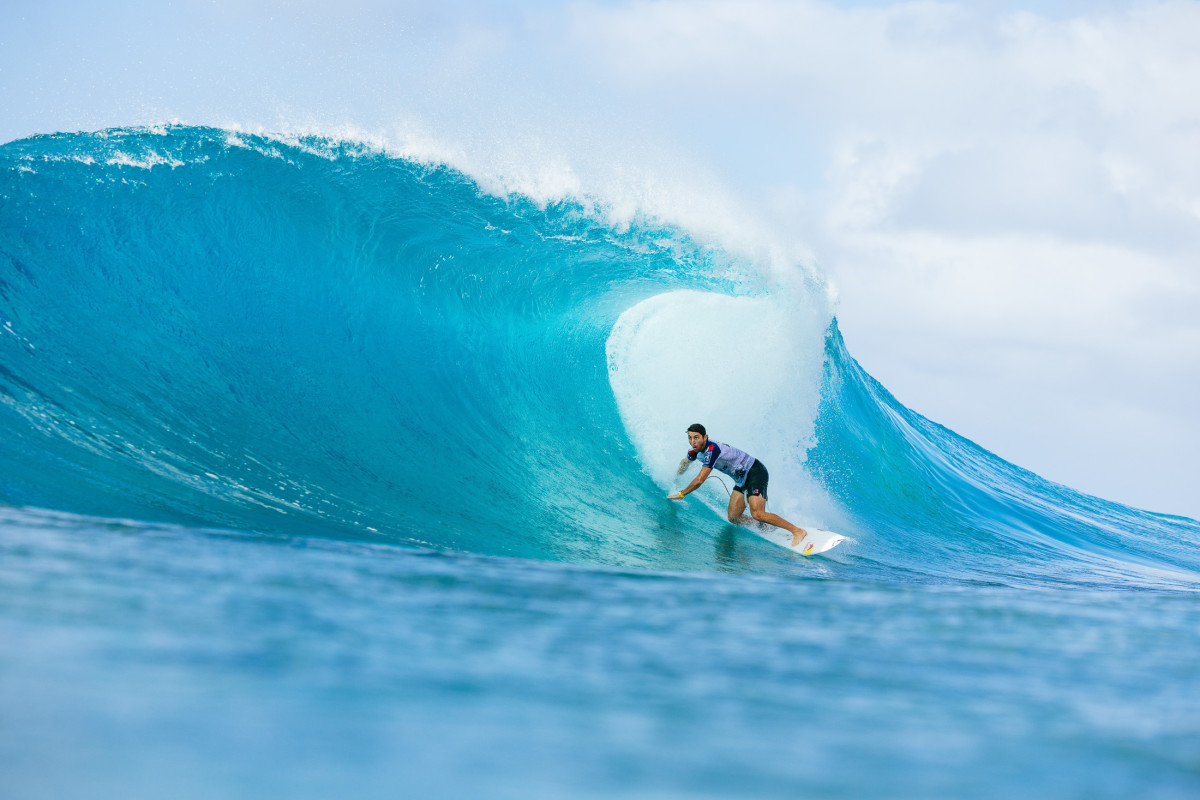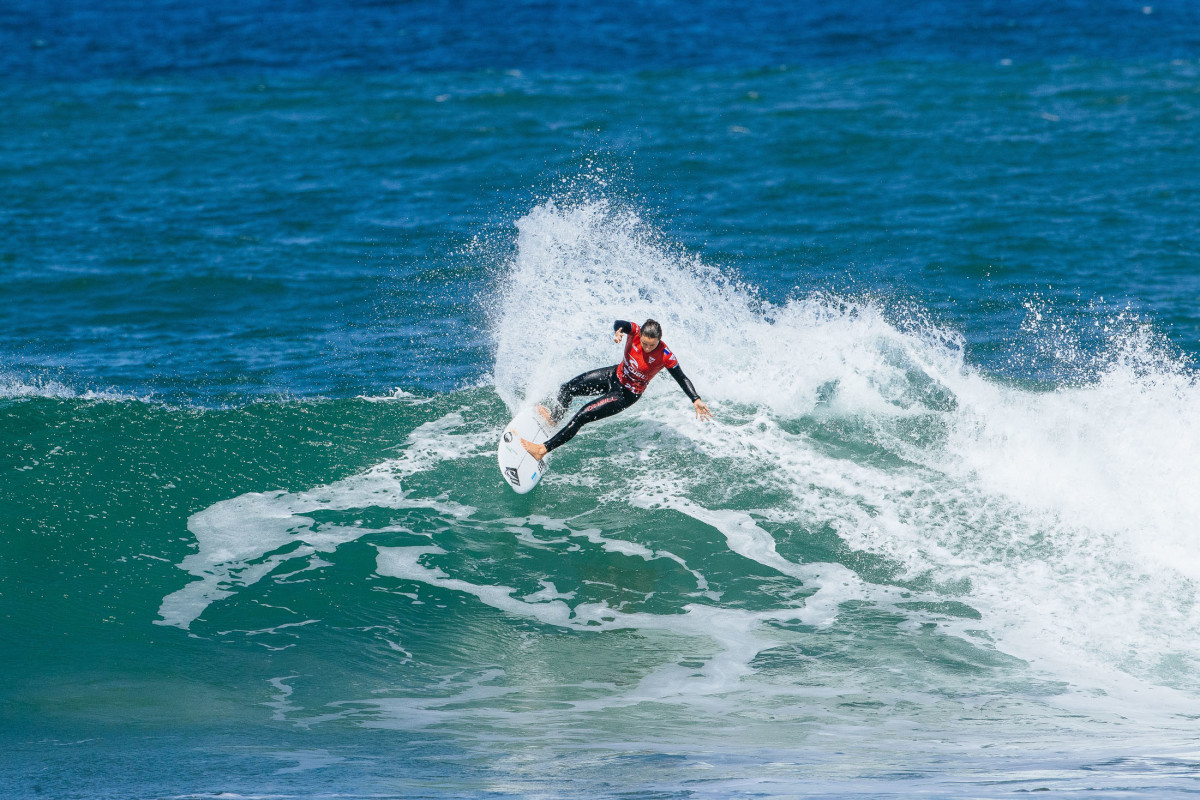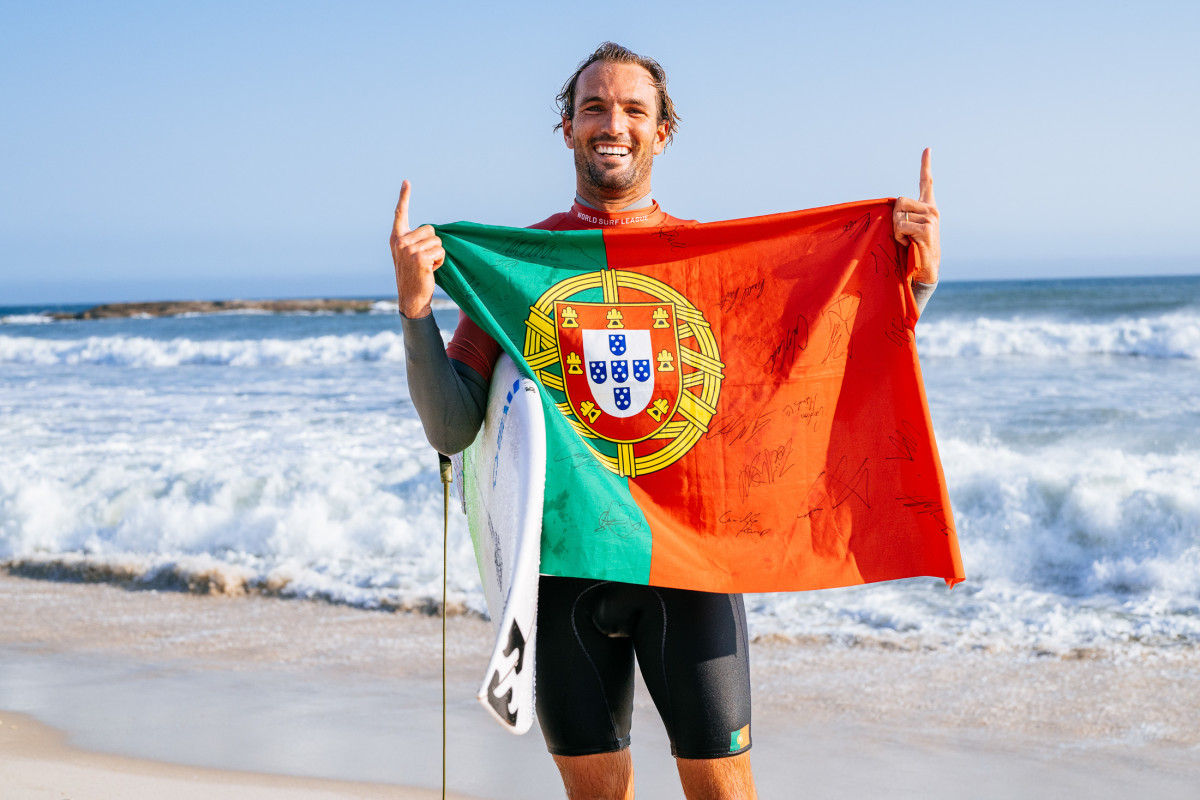
Poullenot/WSL via Getty Images
You might remember the “Euro Force” term if you are of a certain vintage. In the late noughties, it was a label used by a group of elite European surfers and recognized by surf fans as a signifier of a new power in world surfing.
The height was probably 2009 when seven European surfers started on the CT. Jeremy Flores, Mikey Picon, Tiago Pires, Aritz Aranburu, Marlon Lipke, Michel Bourez and Tim Boal were thought to be the tip of the spear that would break the established world surfing order that the USA, Hawaii and Australia dominated.
Fast forward 15 years and the Euro Force looks to be a spent one. The Italian Leonardo Fioravanti is the only male still surfing on the CT, while Johanne Defay is the sole representative on the women’s side.
On the next rung on the Challenger Series, possibly a better barometer of surfing depth, the vital signs don’t look much stronger. In the final 2023 CS rankings, the veteran Frederico Morais was the only Euro to crack the top 10 and qualify, while only six EU-registered surfers featured in the top 50. On the women’s side, no surfers made the all-important top 6 qualification zone, and Nadia Erostarbe was the only one in the top 10.

Brent Bielmann/WSL via Getty Images
The question is… why? In 2009, the rise of the Euro Force made all sorts of sense for all the right reasons. The quality of the waves by then were well-known. The powerful beachbreaks in France, the river mouths and pointbreaks of Spain and the reefs of Portugal produced well-rounded, aggressive and talented surfers. The surf industry was booming, and funding was poured in for young and established athletes to help them reach the pinnacle of the sport. It looked like the EU had a stable platform that would work as a conveyor belt for CT talent for years to come.
The belt, whilst not ever grinding to a halt, has had sand stuck in its gears in recent years. But why? For one, there was the rise of the Euro Force counterweight, the Brazilian Storm, at the same stage. The ‘Storm” had the advantage of having multiple once-in-a-generation surfers. De Souza, Medina, Toledo and Ferreria led the charge but were followed by a sluice of hungry and talented surfers who all worked together for a common cause.
Over the last decade, they established Brazil as the dominant force in surfing. The storm wasn’t a one-off hurricane, but an established weather pattern that never left. Whilst much was made that the storm’s success came at the expense of the USA and Australia, European surfers were also squeezed out as Brazilians dominated the upper echelons of the surfing rankings.

Hughes/WSL via Getty Images
Away from surf geopolitics, the relative lack of success may be a simple numbers game. The combined coastal populations of France, Spain and Portugal are a fraction of that of Australia, Brazil and the USA. And none of those countries face brutal winters, cold water and layers of rubber that are significant barriers to entry for the combined talent pool. That theory is backed by the fact that many of France’s best CT surfers like Flores, Bourez and Defay are from tropical, French territories.
With less surfers in general, and many concentrated in a half-a-dozen surfing hubs, there were fewer surfers with elite potential. The strong surf industry however meant there was plenty of support as funding was thrown at young surfers with any signs of potential. While arguably more talented surfers in other regions were scrapping for sponsors, young European surfers were getting good deals, elite competition wildcard entries and travel budgets.
“That leads to a lack of desire and hunger,” one European elite coach told me. “All the free gear and decent money at a young age, means they haven’t had to fight. They can cruise through without doing the work. Then they hit international competition, and the talent level is a real shock. Plus they aren’t used to losing heats.”

Diz/WSL via Getty Images
Now this isn’t to write off the calibre, hunger and talent of European surfers. Of that Euro Force, Michel Bourez and Jeremy Flores became icons of the sport. The continent too has a new generation coming through. Portuguese Francisca Viselko was crowned World Junior Champion in 2022. After the Australian Leg of the Challenger Series, Nadia Erostarbe, Yolanda Hopkins and Vahine Feirro are well-placed to make the CT. On the men’s side, Fred Morais, Maxime Huscenot, Gatien Delahaye, Tiago Carrique and former CT star Joan Duru are all talented and driven enough to join Leo Fioravanti in the elite ranks. France came second in the 2024 ISA Games, Spain fourth and even Portugal in seventh, all ahead of the US, which showed new depth.
And yet with the surfing world expanding, and the Olympics adding funding and elite training to surf nations all over the world, European surfers, right now, are under-represented at surfing’s top table. Will the Euro Force ever strike back? Or was that a pinnacle never to be seen again?

